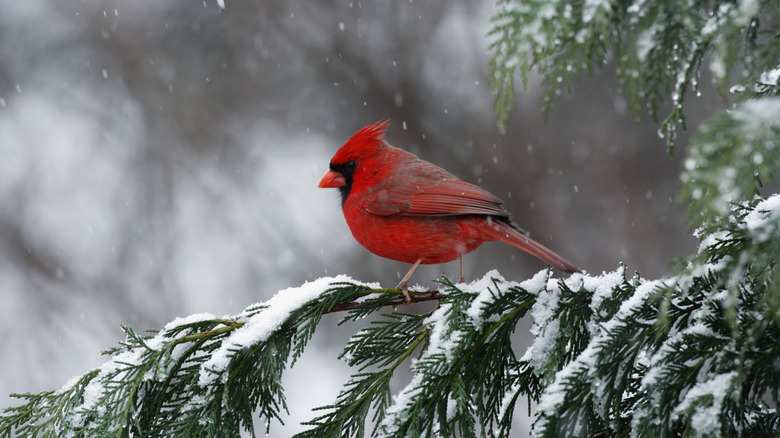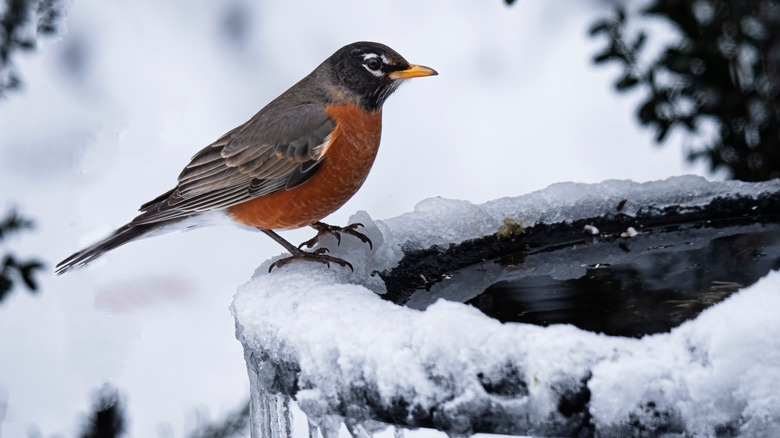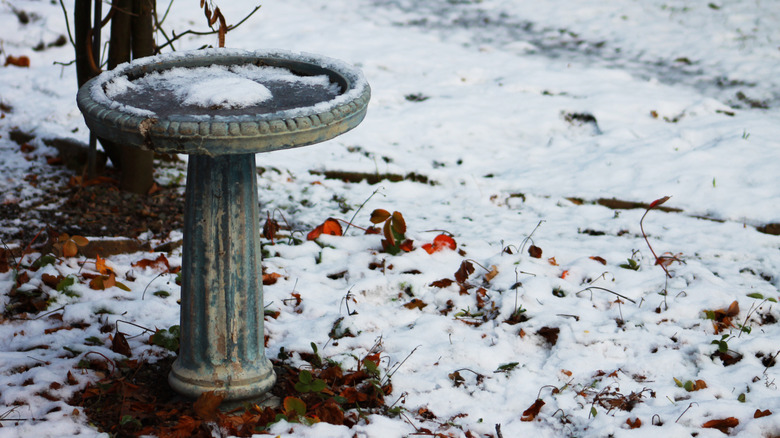The Best Bird Baths For Your Yard During Winter
We may receive a commission on purchases made from links.
Bird enthusiasts often prepare for the spring months, during which there is a likely influx in backyard bird activity. You may be thinking about feeders and water for warmer times of the year, but the reality is that backyard birds depend on sources of food and water in the cold winter months, too. Having a bird bath in your yard is an important way for wild birds to access much-needed drinking water to stay hydrated. If you live in a colder region or one with rapid temperature changes this time of year, your typical ceramic or concrete bird bath may not be the best option due to the risk of cracking. Instead, you should consider modern bird bath designs with granite or metal, or try out other cold weather techniques, such as heating and winterization.
The best bird bath materials for the cold winter months are those made of sturdier stone and metal. The many options include granite, copper, aluminum, and iron bird baths. Metal bird baths have a slight edge here because they are not as heavy or expensive as their granite counterparts. What's more, a metal-based bird bath can work with heaters specifically designed for these structures. Granite bird baths, on the other hand, are arguably more decorative, and these investments can be used in your yard year-round.
Consider a heater for certain types of bird baths, but with caution
Another possible option is to add a heater to your bird bath to help prevent the water from freezing in cold temperatures. There are a few key safety considerations you should make before choosing this option. First, you should only purchase an immersion heater or de-icer that is specifically designed for a bird bath, such as the XpenGeny Bird Bath Heater. Also, these heaters are not recommended for all types of bird baths. While they will work on sturdy granite and metal-based bird baths, heaters shouldn't be used to warm ceramic or concrete designs due to the risk of cracking. Yet another option is to consider a winter bird bath with a built-in heater, such as the Lovppy Heated Bird Bath.
There are also downsides of bird bath heaters to consider. First, it's important to follow manufacturer instructions carefully to prevent damage and dangers from improper installation and maintenance. Another downside is that having a warm bird bath could encourage birds to bathe instead of just drinking water. Birds should not bathe in bird baths during the winter because their bodies can freeze in cold air temperatures afterward.
Winterizing an existing backyard bird bath
Finally, if you have either a concrete or ceramic bird bath, there are still ways you can help winterize them. Ceramic and concrete bird baths have a tendency to crack if water is left to constantly freeze and thaw in colder weather, making these types of baths better suited for summer or in regions with warmer temperatures year-round. However, if you're on a tight budget and want to work with what you have, the key here is to prevent water from freezing as much as you can. Removing the water on days of freezing temperatures can help. You can also place the bird bath in a part of your yard that gets plenty of sunshine to help minimize daytime water freezing.
Another option for a ceramic or concrete bird bath is to cover it to help prevent cracking. This also saves you from having to try and move this heavy object out of your yard. Look for a weather-resistant cover that will fit completely over your bird bath, such as the CoverMates Bird Bath Cover. The downside to covering the bath during the day is that backyard birds will not have access to your source of water during these times, so you may want to try to reserve this method for especially cold weather. Keep in mind that water freezing is just one reason why birds may want nothing to do with your bird bath, so if you notice you don't have a ton of visitors even with proper winterization, there could be another problem.


